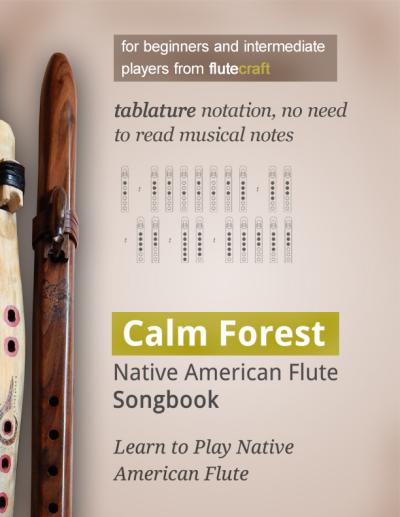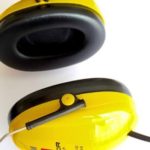Some time ago, I wrote how to learn to play Native American Flute. Today I wish to talk how to learn to build it. Building this instrument is not too difficult.
First things first – I have published all the necessary how-to tutorials here on FluteCraft for free. I do provide some extra paid and printed content via CreateSpace, too :). Everything you need you will find in this article.
Native American style flute is one of the simpler woodwind instruments to build.
The very first thing to realize is that you can learn how to build flutes using nothing more but on-line resources. Building a Native flute is simple once you learn to work with wood and with the tools. Once you understand the basics of the sound mechanism and some ratios, everything else is simple. There is no single way to build a flute, and the flute’s look can vary.
Required Skills
When I was starting out, I had no knowledge of woodworking – none at all. So I went on YouTube and I looked for woodworking channels where I could learn the basics.
- Visit YouTube and Steve Ramsay’s channnel: Woodworking for Mere Mortals. It’s a good place to start with basic woodworking. Just by watching the videos you can learn some stuff.
I also read through two small books that covered the basics of woodworking.
- Visit Amazon, where you can find many books about woodworking.
Learning about woodworking is the first thing to do if you want to learn to build Native American style flutes. You don’t have to know it all. Just learn about lumber that you want to use, and learn something about the tools you’re going to use. Also, become familiar with safety rules, because woodworking – if done wrong – can be dangerous for your health.
In the age of the Internet, learning new things is easy. Many things can be learned for free, as well. Whatever it is that you may want to learn, remember that Google and YouTube are your friends. Just look for tutorials and how-to articles. You will be surprised!
The basic knowledge and skills is all that is needed. You can learn more as you go. Actually, in most part you will learn through practice, by making yet another flute and learning from it.
Collect the Tools and Materials
My first flutes were made of bamboo. Bamboo is easy to obtain in most parts of the world. It’s hallow, so you don’t have to struggle to build the inner chambers of the flute. Bamboo is a great choice for beginners, because it allows you to learn about ratios (inner bore diameter to the length of the bore), and since you don’t have to carve the inside, you can focus on tuning and building the sound mechanism – the most important part of the instrument.
But if you want to make true wooden flutes, then you need to get some materials: branches or lumber. Branches can be collected in the woods or in the park, and lumber can be bought in specialized stores.
Tools are also neccessary.
The list above contains the basic tools necessary. You can also grab power tools, such as gun drills, routers, lathes, sanding machines, but it’s optional. What you need to remember is that even if you never used woodworking tools before, you can learn to do so.
For me, it was a kind of life lesson. I never worked with power tools, not even a drill :). And yet quickly, within a year, I was able to learn how to use the tools, how to take care of them, and how to keep myself safe from injuries. And, generally, I was able to learn a manual skills without any previous experience.
Everyone can learn anything if they are only willing to do so :).
Also, remember that in many cases, you need no power tools to build a flute. Everything can be made with normal, non-power hand tools, gouges and knives.
A Short Note on How a NAF is Made
FluteCraft provides all the information on building a NAF – below I post a summary of these information that are discussed in details in other articles.
Today, a Native American style flute is made in various ways. Some people stick to the old traditional methods with very limited tools. Others use modern carving gouges, knives and sanding paper to make the flute by hand. This is often a case for hobbists and small flutemakers, and to people who make their flutes out of branches. Basically, we can use either a wooden branch or a pre-dried lumber to make a flute. Some makers buy a fresh timber, cut it into pieces of proper size and dry it. The same goes for branches – some people collect already dried branches, others cut fresh green branches from the trees and then they dry it.
The wood msut be dry enough – if it isn’t, it will continue to dry and shrink in the process, which may lead de-tune the flute, or even cause cracks and breaks.
For both branches and dry lumber, two methods of making flutes exist, that allow the flutemaker to make two chambers within the flute’s body. The maker eithers drill a flute with long drill bits, or so called “gun-drill” which is a modified lathe; or a maker can make the flute out of two pieces of wood. Usually a single piece of wood like 4×4 or 6×6 cm is cut into two (2×4 or 3×6), or two separate pieces are taken; while a branch is split into two. Then, the maker creates the inner chambers: the slow air chamber and the sound chamber. Some people use a chisel to carve the inner chambers, but most makers these days use a router with round router bits.
When the chambers are made, the wood pieces are glued back together. This way, both chambers can be made, with a thin wall between them. The next step is to make a nest and the sound mechanism. Usually, holes are pre-drilled and then sanded down, or power-drilled with a small router or dremmel-like powertool. An air channel is made with chisels or routers either within the flute’s body, or within the flute’s separate block. Most makers take care of the details, and they sand and file the sound mechanism with small diamond files.
When a flute is made out of branch, it’s then sanded down. A flute made of lumber is placed within a lathe and rounded, then sanded down. Next, the finger holes are drilled, and the flute receives a tuning. A well-made flute is tuned individually by the maker – the process takes from few minutes up to few hours. Sometimes, a flute sounds good within few minutes, and sometimes it takes a lot of work to tune it properly. When the flute plays well, it’s either laquered or oiled with natural oils to protect it against moisture.
A block is a piece of wood closing the air channel from the top. It is also knwn as a fetish, or a bird, or a “totem” – which can be a simple piece of wood, or it can be cut into various shapes, some representing animals or symbols. It may have a wings surrounding the true sound hole and a chimney between them, too.
This way, the flute is done.
Learn to Build a Basic Native Flute
Once you know the basics of woodworking and you have all the tools needed, you can learn how to build a Native American flute, step by step.
To do so, I used the Internet which is full of wonderful resource. This includes googling for answers, but also watching many videos on YouTube.
To simplify things, I launched FluteCraft a couple of years ago. Over time, I published all the necessary tutorials.
- Learn how to build a branch flute – this knowledge will work well for both bamboo flutes and lumber flutes.
- Learn how to tune a flute – to a standard pentatonic minor scale.
A Native American Flute is made of two chambers and a sound mechanism. The simplicity of this instrument allows the person to play it easily. This is important to know: many flutes are very difficult to play, and without proper skills, building them well is difficult.
But NAF is simple to play. It’s construction provides some area for small mistakes. I mean that even if the sound mechanism or chambers are not perfect, the flute will work. This simplifies the construction process.
Improve Your Skills Further
Once you become familiar with the basics, everything else is about practice and more learning. Build flute after flute, read books, watch video guides when available, and keep improving your skills.
 If you want some more knowledge, I do provide a printed flutemaking manual. Aside all the free tutorials from FluteCraft, it also contains additional photos, tips, suggestions, tutorials, how-to ideas and chapters. And it’s available in print, so it’s very useful in a dusty workshop.
If you want some more knowledge, I do provide a printed flutemaking manual. Aside all the free tutorials from FluteCraft, it also contains additional photos, tips, suggestions, tutorials, how-to ideas and chapters. And it’s available in print, so it’s very useful in a dusty workshop.
- The Art of Flutemaking – my expanded printed guidebook is available on Amazon.
Building Native American Flute can be very rewarding. It can be a nice hobby, a way to spend your free time peacefully. Also, playing a flute you personally made is a great experience! It’s a knowledge you can share with your kids, for example, or a nice way to create gifts for those you love. Some people may even turn it into business.
You can learn how to build this instrument, and all you need is a bit of patience :). Once you learn how to build the first one, build the next one and so on, so on. This is how you will perfect your skills.
Don't forget to become a fan on Facebook and subscribe to new posts via RSS or via email.










 via EMAIL
via EMAIL